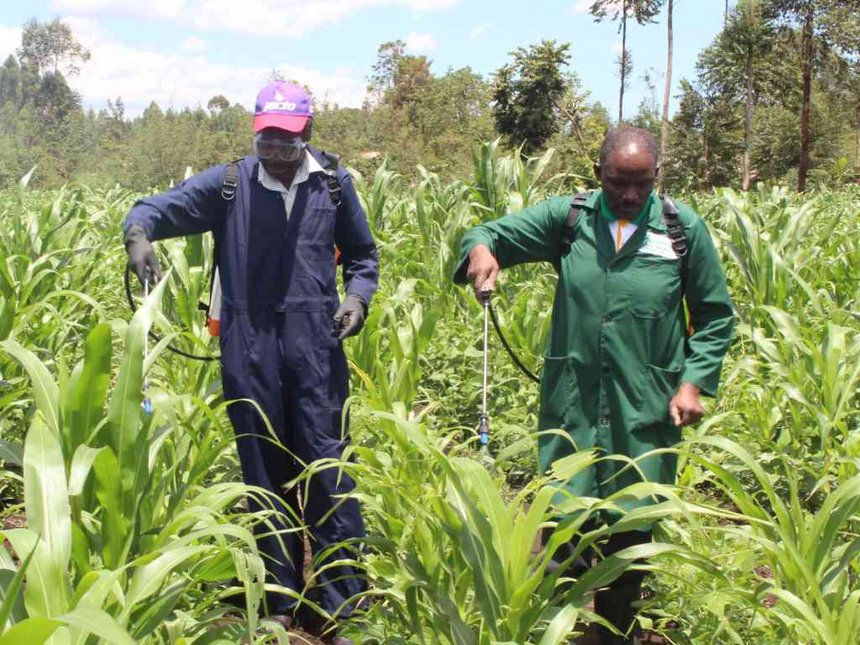
Many smallholder farmers in various parts of the country which receive much rainfall such as Muranga, Laikipia, Kakamega, Narok, Kiambu and Kisii among other places every year experience tremendous losses to East Coast Fever (ECF), a disease which causes fever, enlarged lymph nodes, anorexia, laboured breathing, corneal opacity, nasal discharge, diarrhoea and anaemia in animals.
According to the Global Alliance for Livestock Veterinary Medicines (GALVmed), ECF which is caused by protozoa Theileria parva has a fatality rate of 100 per cent in cattle from on–endemic areas if untreated. Morbidity rate is 100% among indigenous cattle, but the mortality rate is usually low.
There are about 50 million cattle at risk (with 10 million calves per annum) and the total yearly cost of the disease is estimated to be US $596 million, according to GALVmed.
The disease whose incubation period is 12 months is transmitted by ticks which are acting as biological vectors. It is transmitted to animals through saliva of the feeding tick. Transmission can also occur via reused needles or animals that have survived the infection.
RELATED ARTICLE: Opinion: Vaccinating livestock against East Coast fever increases incomes of smallholder farmers
ECF causes high loss of milk and meat production especially during wet season when there is an all-time increase in tick population.
“Due to the lethal nature of the disease, scientists have been working round the clock to find vaccine that will help farmers deal with this menace,” wrote Dr Moses Olum, veterinary surgeon, Faculty of Veterinary Medicine University of Nairobi.
Experts from Kenya Agricultural and Livestock Research Organisation (KALRO) and the International Livestock Research Institute (ILRI) launched a nationwide ECF vaccine in 2012 in Kitale which ended up in field trials in various parts of the country where 1.3 million heads of cattle were vaccinated.
The disease which is spread in sub-Saharan Africa had its vaccine found by KALRO and ILRI experts in 2015 and used in Kenya and Tanzania.
The ECF vaccine is now commercially available and widely used by most farmers in East Africa though the vaccine was first rejected in Uganda.
ILRI is now working closely with GALVmed to fast-track adoption of proven technologies and vaccines where livestock vaccinators will be trained ahead of upcoming vaccination exercise of one million heads of cattle.
According to experts, the vaccine employs the ‘infection and treatment method’ that involves infecting cattle with a ‘cocktail’ of live parasites and simultaneously treating them with a long-lasting antibiotic. This ‘live vaccine’ method generates life-long immunity to East Coast fever.
The vaccine is packed in straws of 10 or 40 doses and has to be transported in liquid nitrogen just like semen. It is reconstituted with a diluent and should be used within two hours of preparation.
RELATED ARTICLE:Scientists step up war on East Coast Fever with superior vaccine
Farmers and veterinary officers alike are advised to adhere to antibiotic withdrawal periods for milking animals and the only animals vaccinated against ECF are cattle since they are the only ones affected.
The vaccine offers protection to up to 98 per cent of animals vaccinated and it provides immunity for a lifetime.
It is is produced for commercial use by KALRO and ILRI and according to Director of Veterinary Services, animal service providers who want to offer ECF vaccinations must undergo a one week practical training at the Veterinary Research Institute in Muguga, from which they receive a certificate.
RELATED ARTICLE:Uganda livestock researchers using genetic materials from Kenya to develop ant tick vaccine
University of Nairobi Clinical Studies Department in Kabete and other private entities such as Sidai Africa and Vet Aid provide the service.
Since the vaccine is administered concurrently with an antibiotic, the cost is higher than other vaccines varying between Sh700 and Sh1,000 depending on the weight of the animal. Any animal can be vaccinated while calves can only be vaccinated from three months old and small scale farmers are advised to be in groups to manage the cost.





 Celeries in part of Kenneth Gikinya's quarter farm in in Kibichiku, ower Kabete in Kiambu County. He uses pigs' manure to keep moles off the farm.
Celeries in part of Kenneth Gikinya's quarter farm in in Kibichiku, ower Kabete in Kiambu County. He uses pigs' manure to keep moles off the farm.











